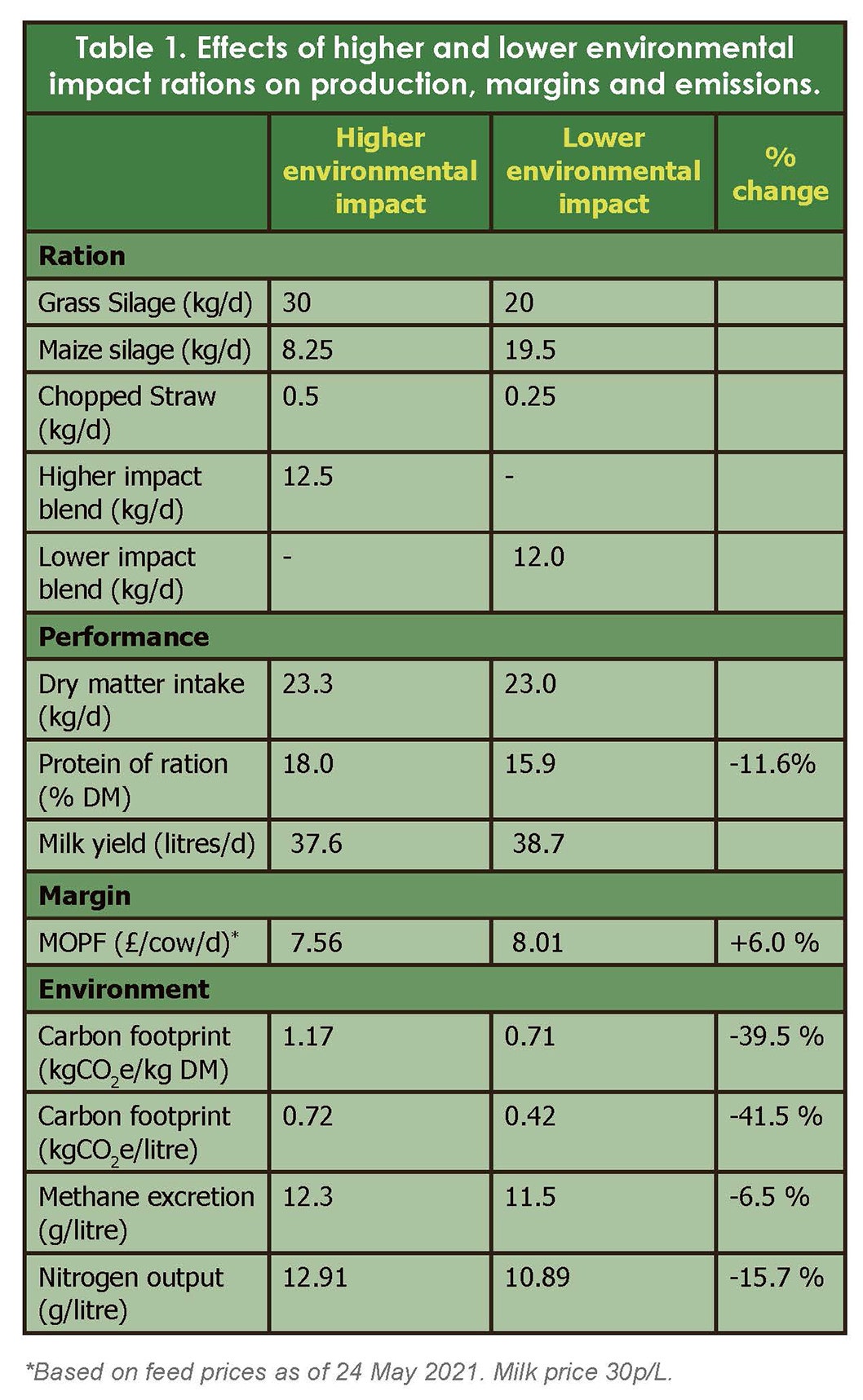
Reduce your environmental impact whilst maintaining or improving margins
Dairy farmers can reduce the environmental impact of their rations through lower carbon footprints, reduced nitrogen excretion and lower methane output, whilst maintaining or even increasing their margin over purchase feed (MOPF).
Targeting net zero
Demand and concerns regarding the environment continue to grow and targets for net zero set by countries, businesses and institutions is gaining pace. For example, Arla is aiming for net zero by 2050, whilst the NFU, on behalf of British agriculture, has a target of 2040. As more food related businesses set their targets, inevitably this will require British farms to monitor and reduce their greenhouse gas emissions.
Mole Valley Farmers has been working hard to understand how British agriculture can monitor, mitigate, and offset these emissions to reach net zero. It will be no easy task, but British agriculture is well placed to lead the way.
Typical carbon foot printing of a British dairy farm tends to show four main areas of higher greenhouse gas emissions:
• Purchased feed
• Fertiliser purchase and use
• Manure management
• Enteric fermentation.
Minimising these will be essential as part of the strategy to reach net zero. Mole Valley Farmers is looking at each area to find effective mitigation solutions as part of our Climate Positive Agriculture initiative. One important area is purchased feed and how to utilise these alongside forages as we design cow rations. The choice for forages and concentrates will greatly influence environmental impact and margins.
Monitoring the environmental impact of diets
Mole Valley Farmers has been adding extra technology to our on-farm rationing service to enable us to not only monitor the nutritional and financial implications of rations, but also the environmental ones as well.
For any ration we can calculate the performance of the cows, margin over purchase feed (MOPF) and now, the carbon footprint, methane output and nitrogen excretion; all of which are important factors contributing to total greenhouse gas emissions.
This will enable farmers to benchmark where they are and assess the potential for reducing emissions, whilst monitoring the effect on production and financial sustainability.
Examples
Table 1 details two rations: one with a higher environmental impact, the other lower. Through careful selection of feeds, the rations show stark differences in predicted levels of environmental impact and margins.
In this case the lower impact diet results in:
• 39.5% decrease in the carbon footprint of the ration
• 15.7% reduction in nitrogen output per litre
• 6.5% lower enteric methane emission per litre
• An increase in MOPF from £7.56 per cow per day to £8.01.


Both of the blends used in each example diet are high in energy, but vary in the choice of feeds supplying the energy. This results in different balances and qualities of starch, fibre and proteins, which enhances the performance of the cows, increases the MOPF and lowers the environmental impact.
Mole Valley Farmers is expanding our range of feeds this summer and winter to include feeds that will, through improved protein nutrition, reduced methane output, increased milk solids and lower carbon footprints help to reduce greenhouse gas emissions from UK farms, whilst at the same time sustaining farm incomes.









